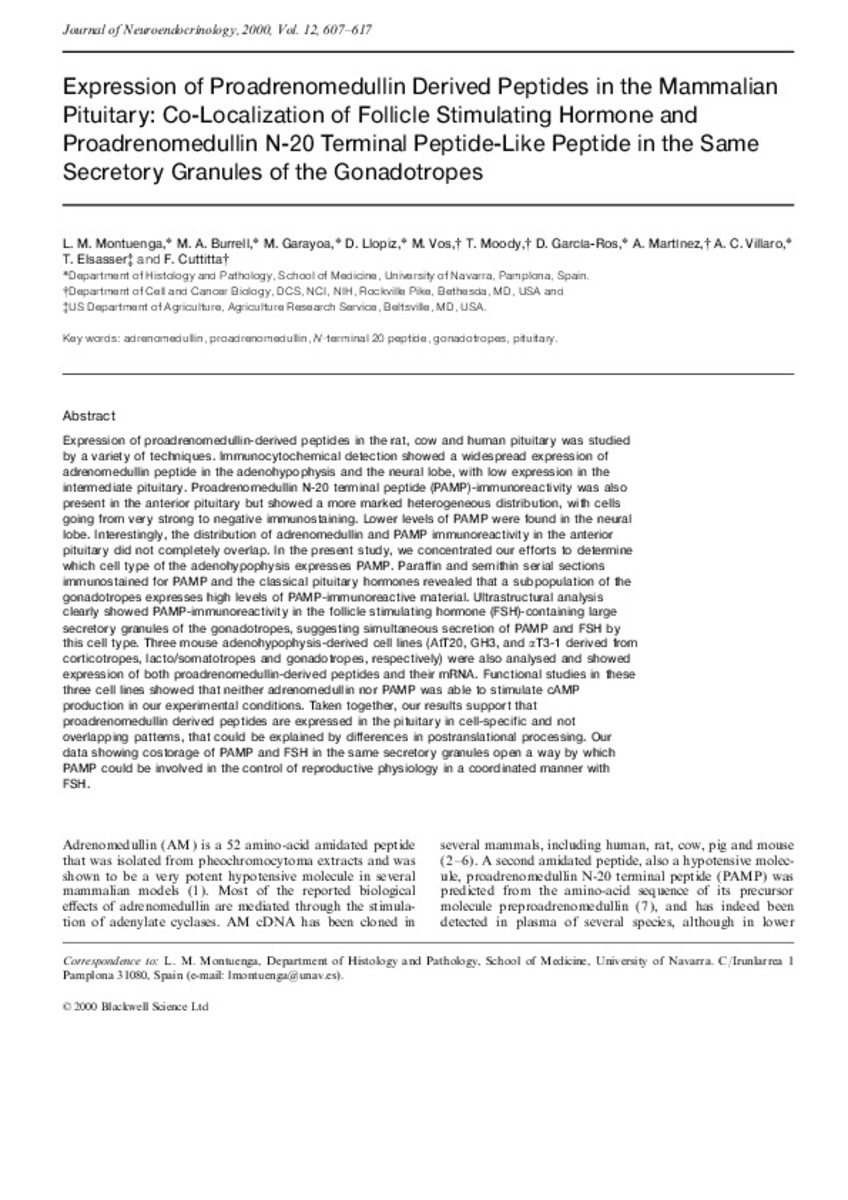Expression of proadrenomedullin derived peptides in the mammalian pituitary: co-localization of follicle stimulating hormone and proadrenomedullin N-20 terminal peptide-like peptide in the same secretory granules of the gonadotropes
Palabras clave :
Adrenomedullin
Proadrenomedulli
N-terminal 20 peptide
Gonadotropes
Pituitary
Fecha de publicación :
2000
Editorial :
Blackwell Publishing
Cita:
Montuenga LM, Burrell MA, Garayoa M, Llopiz D, Vos M, Moody T, et al. Expression of proadrenomedullin derived peptides in the mammalian pituitary: co-localization of follicle stimulating hormone and proadrenomedullin N-20 terminal peptide-like peptide in the same secretory granules of the gonadotropes. J Neuroendocrinol 2000 Jul;12(7):607-617.
Aparece en las colecciones:
Estadísticas e impacto
0 citas en

0 citas en

Los ítems de Dadun están protegidos por copyright, con todos los derechos reservados, a menos que se indique lo contrario.










